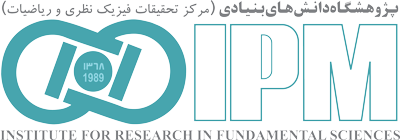“School of Biological Sciences”
Back to Papers HomeBack to Papers of School of Biological Sciences
| Paper IPM / Biological Sciences / 18229 |
|
||||||||||||
| Abstract: | |||||||||||||
|
Abstract
Motivation: Accurately predicting drug-target interactions (DTIs) is critical for accelerating drug discovery, repositioning, and development. Traditional experimental methods are often expensive and time-consuming, emphasizing the need for efficient computational models to streamline these processes. To address this challenge, we developed MiRAGE-DTI, a novel computational framework that integrates diverse drug and target similarity measures with robust machine learning techniques to achieve superior predictive accuracy.
Results:
MiRAGE-DTI introduces a novel framework that integrates structural, functional, and interaction-based features into a unified model. Leveraging the strengths of Random Forest classifiers, MiRAGE-DTI ensures robust and interpretable predictions while addressing challenges such as class imbalance and data variability. Comprehensive evaluations across multiple benchmark datasets, including GPCR, IC, NR, and Enzyme, reveal that MiRAGE-DTI consistently outperforms state-of-the-art algorithms such as DTI-CNN, GCNMDA, MVGCN, MMGCN, GraphCDA, DTINet, and MIDTI. It achieves significant improvements in key metrics such as AUROC, AUPR, and accuracy. To validate its predictions, molecular docking studies were conducted, highlighting strong binding affinities for key drug-target interactions, including Oxandrolone-PGR and Metyrapone-CYP2E1, which demonstrate high therapeutic potential. Beyond predictive accuracy, MiRAGE-DTI has practical implications in drug repositioning and personalized medicine, as well as the potential to streamline preclinical workflows. Its ability to uncover novel drug-target relationships enhances the understanding of molecular mechanisms underlying diseases, paving the way for innovative therapeutic strategies. Furthermore, by predicting off target interactions and potential side effects, MiRAGE-DTI contributes to improving drug safety profiles and regulatory evaluations.
Conclusion:
MiRAGE-DTI represents a versatile and powerful tool for advancing drug discovery and development. Its ability to identify novel therapeutic opportunities, repurpose existing drugs, and enable precision medicine highlights its transformative potential in tackling unmet medical needs. The framework's robust performance, validated predictions, and wide-ranging practical applications position MiRAGE-DTI as a critical resource for modern drug discovery.
Download TeX format |
|||||||||||||
| back to top | |||||||||||||



















